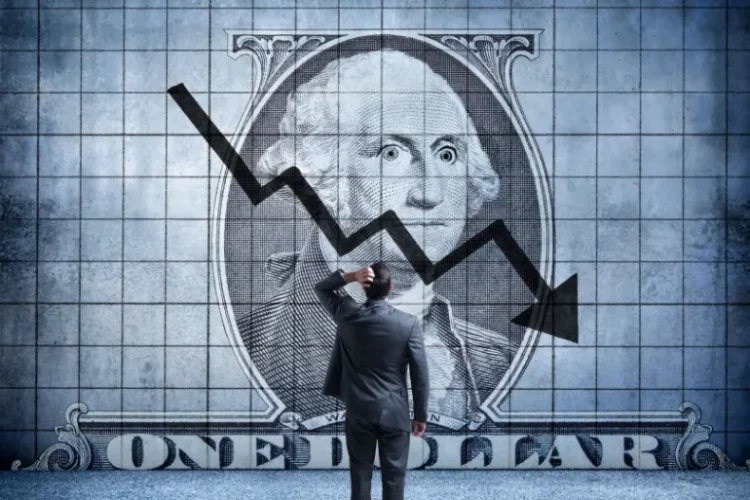Introduction
The United States faces a critical challenge in managing its fiscal policy, one that has grown more complex and urgent in recent years: the debt ceiling crisis. With the U.S. national debt surpassing $31 trillion, the issue of how to balance fiscal deficits, ensure sustainable economic growth, and avoid a catastrophic debt default is more pressing than ever. The debt ceiling, a statutory cap set by Congress on the amount of debt the U.S. government can incur, has become a frequent flashpoint in American politics, leading to intense debates about the long-term sustainability of government spending and the future of fiscal policy.
In this article, we will explore the implications of the U.S. debt ceiling crisis, the risks of failing to address it, and potential solutions to strike a balance between fiscal responsibility and economic growth. We will examine the relationship between the national debt, fiscal deficits, and economic performance, the potential consequences of a debt default, and the policy measures that can help mitigate the risk of a financial catastrophe while ensuring that the U.S. economy remains resilient and competitive in the global market.
1. Understanding the U.S. Debt Ceiling Crisis
a. What is the Debt Ceiling?
The U.S. debt ceiling is a legal limit on the total amount of money the U.S. government can borrow to meet its existing legal obligations. This includes paying for social security, military salaries, interest on the national debt, and other essential services. When the debt ceiling is reached, the U.S. Treasury Department can no longer borrow additional funds, even to cover already approved expenditures.
The debt ceiling does not control or limit the ability of Congress to run deficits or make expenditures. It only restricts the Treasury’s ability to issue debt to cover those costs. Historically, Congress has raised the debt ceiling to accommodate rising government spending, but political deadlock and disagreements over fiscal policy often lead to contentious debates over whether and when to increase the limit.
b. Rising Debt Levels and Fiscal Deficits
The national debt of the United States has increased substantially over the past few decades. The Congressional Budget Office (CBO) projects that the U.S. government will continue to run significant fiscal deficits in the coming years due to factors such as rising healthcare costs, entitlement programs like Social Security and Medicare, and military spending. The combination of these spending needs and the reduced tax revenue growth (particularly after tax cuts) has led to annual budget deficits that add to the national debt.
In 2023, the U.S. federal budget deficit was projected to exceed $1 trillion. These persistent deficits raise questions about the long-term sustainability of U.S. fiscal policy, the potential for inflationary pressures, and the economic consequences of a growing debt burden.
c. The Political Impasse
The debt ceiling debate is often shaped by political considerations. In recent years, Congress has been deeply divided over how to address rising deficits and the national debt. While some advocate for reducing government spending or reforming entitlement programs, others push for higher taxes on corporations and the wealthy to address the fiscal imbalance. This ideological divide has led to frequent standoffs over raising the debt ceiling, with each party seeking leverage to advance its own policy agenda.
These political gridlocks often result in last-minute deals to raise the debt ceiling, creating uncertainty in financial markets and increasing the risks associated with a potential debt default.
2. The Economic Risks of a U.S. Debt Default
a. Defaulting on U.S. Debt: A Catastrophic Outcome
A debt default occurs when the U.S. government is unable or unwilling to meet its financial obligations. This would mean that the U.S. Treasury could not pay interest on its bonds, or potentially even repay the principal amount on existing debt. Defaulting on government debt would have immediate and far-reaching consequences for both the U.S. economy and global financial markets.
- Global Market Impact: U.S. Treasury securities are considered one of the safest and most liquid investments in the world. They are used by governments, financial institutions, and investors globally as a benchmark for risk-free investment. A default would severely damage confidence in U.S. debt and financial markets, potentially triggering a sharp decline in the value of the U.S. dollar, higher borrowing costs for the U.S. government, and a broader financial crisis.
- Interest Rate Spikes: U.S. Treasury securities play a critical role in global financial markets as the benchmark for interest rates. A default would likely lead to a dramatic rise in interest rates, both for government bonds and for private sector borrowing. This could increase the cost of financing for businesses and consumers, leading to a slowdown in economic activity and potentially pushing the economy into recession.
- Downgrade of U.S. Credit Rating: In 2011, Standard & Poor’s downgraded the U.S. credit rating for the first time in history due to concerns about political gridlock over the debt ceiling. A default would likely result in further downgrades, raising borrowing costs for the U.S. government and increasing financial market volatility.
- Loss of Global Confidence: A U.S. debt default would likely result in a loss of confidence in the U.S. as the world’s economic leader. The U.S. dollar is the dominant global reserve currency, and many foreign governments hold significant amounts of U.S. Treasury securities. A default would undermine the credibility of U.S. economic policy and could prompt countries to diversify away from the dollar, leading to further economic instability.
b. Fiscal and Monetary Policy Challenges
In the event of a debt ceiling crisis, the U.S. Federal Reserve would face significant challenges in navigating the economic consequences. While the Fed could attempt to ease monetary conditions through lower interest rates or quantitative easing, such measures may not be enough to counteract the immediate shock of a debt default. Additionally, the Fed could face increasing pressure to stabilize the financial system while also addressing concerns about inflation, which could rise due to higher borrowing costs and reduced confidence in the U.S. economy.
3. Balancing Fiscal Deficits and Economic Growth
a. The Importance of Sustainable Fiscal Policy
The long-term solution to the debt ceiling crisis lies in achieving a more sustainable fiscal policy—one that balances government spending with tax revenues while also ensuring that investments in key areas such as infrastructure, education, and research & development continue to drive economic growth.
- Revenue Increases: Raising revenue through tax reforms, such as reducing tax breaks for high-income earners and corporations, or introducing new taxes (e.g., carbon taxes), could help address fiscal deficits without harming economic growth. However, tax increases should be implemented carefully to avoid stifling business investment or consumer spending.
- Expenditure Control: At the same time, controlling government spending is essential for ensuring that fiscal deficits remain manageable. However, cuts to essential programs like Social Security, Medicare, and defense spending are politically sensitive and could have negative social consequences. Policymakers must find ways to control spending without undermining key public services or economic growth.
- Deficit Reduction Strategies: Comprehensive deficit reduction strategies could include a combination of tax reform, spending cuts, and entitlement reform. For example, gradually increasing the retirement age or restructuring entitlement programs like Medicare and Medicaid could reduce future fiscal burdens without triggering immediate economic pain.

b. Fiscal Stimulus and Economic Growth
In the short term, there may be a need for fiscal stimulus to support economic growth, particularly in the wake of economic slowdowns, recessions, or global crises such as the COVID-19 pandemic. Temporary increases in government spending or targeted fiscal measures—such as infrastructure investments or support for key sectors—could help stimulate demand and create jobs, thus boosting economic activity.
However, such stimulus measures should be carefully designed to ensure they do not exacerbate long-term fiscal deficits. Investments in growth areas like clean energy, technological innovation, and infrastructure can create long-term economic benefits while also boosting the productivity of the economy.
c. Strengthening the Debt Ceiling Process
One potential solution to avoid future debt ceiling crises is to reform the debt ceiling process itself. Some policy experts have suggested that the debt ceiling should be eliminated altogether, as it often leads to unnecessary political brinkmanship that can harm the economy. Others propose automatic debt ceiling increases that would be tied to a fixed percentage of GDP growth or inflation, ensuring that the government has enough borrowing capacity to meet its obligations while preventing arbitrary political interference.
4. Conclusion: Avoiding the Catastrophic Impact of Debt Default
The U.S. debt ceiling crisis presents a critical challenge for policymakers seeking to balance fiscal discipline with economic growth. A failure to address this issue could lead to disastrous consequences, including a debt default that would disrupt global financial markets, raise borrowing costs, and undermine confidence in the U.S. economy.
To prevent this outcome, the U.S. must pursue a more sustainable fiscal policy that includes a balanced approach to revenue increases and expenditure control, while also investing in the sectors that will drive long-term economic growth. Moreover, reforms to the debt ceiling process itself may be necessary to prevent future political gridlock and ensure that the government can meet its financial obligations without resorting to dangerous brinkmanship.
In the end, the ability to balance fiscal deficits with economic growth is essential not only for the stability of the U.S. economy but also for the stability of the global financial system. Avoiding debt default requires leadership, cooperation, and long-term vision—qualities that are essential for navigating the complex fiscal challenges that lie ahead.

















































